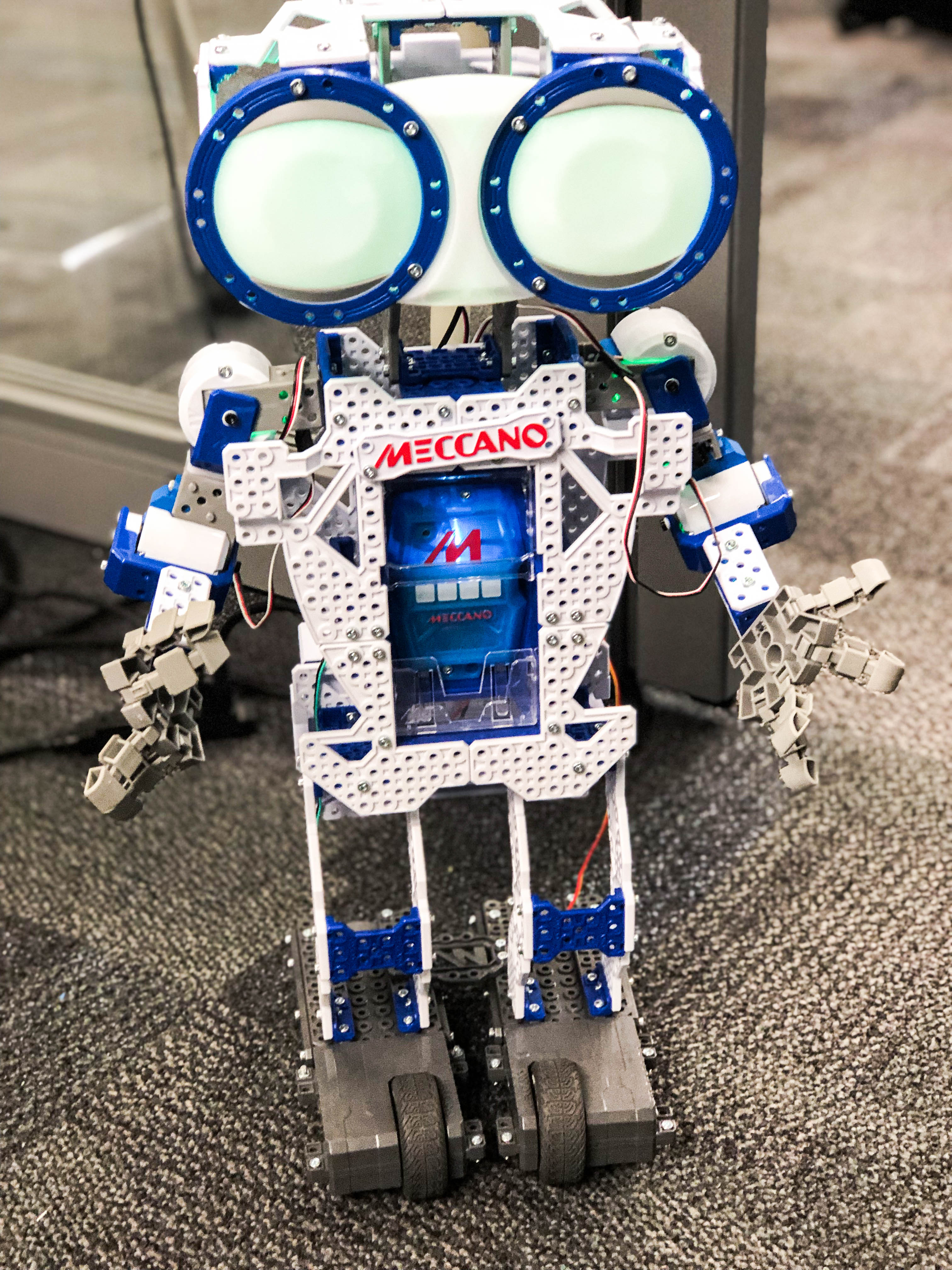Students can meet an octopus, party otter and Meccanoid the robot.

Story and photo by Katlynn Mullins
On the first floor of the Library, nestled in the right-hand corner, is the Student Technology Center.
There are usually people on laptops at the high-top table, and the occasional student asking for help. Behind the table, you can find an office, some workspaces and a room filled with electronics – it’s known as the MakerSpace.
The STC’s MakerSpace allows students to check out virtual reality headsets, programmable circuit boards and robots, and even use the 3D printer.
A second room is the STC training room. There, students can register for classes that teach them about programs like Adobe Photoshop, Excel, PowerPoint and Canvas.
“We try to do the ones that we find students need help with or are interested in,” said STC manager Summer Natali.
Some workshops have levels depending on a student’s experience, like the training needed to use the 3D printer. There are two course levels that students can register for.
The first is the beginner course that teaches them about the online software, Tinkercad. Here, they can create what they’d like to print — whether for educational or entertainment purposes — and it can be printed with Natali present.
The intermediate course takes students through specifics needed to run the printer, like filling the filament and how to make it work.
“They can see their stuff come to life,” Natali said.
Among the student creations are an octopus, a dragon and a slug that morphs into a snail once its shell is attached. The snail’s shell has a door revealing the Party Otter — a normal otter, but with a red, glittery top hat.
One student is working on a self-watering planter, according to Natali.
She said it’s brought more people into the STC over the semester, and the students are most interested in the VR headsets for both work and play.
Teachers have assigned their classes to check out the VR headsets to learn from, but students also come in when they have free time to play games.
STC has partnered with St. Petersburg College in past semesters to host VR events, and Natali recalled a student painting a mandala while wearing a VR headset.
The VR headsets are connected to a TV at the events, and everyone gathers around to watch. It can be recorded, revisited and walked through. Natali did that with the mandala.
It “just went on forever,” Natali said.
The STC also has robots.
They’re “open-sourced” and can be programmed, then coded. They range from simple circuit boards with LED lights to fully-moving and talking.
Meccanoid the Rebel Robot was programmed to have a mind of his own.
“He’ll get sassy with you sometimes,” Natali said.
But Meccanoid was in high spirits as he sprang to life. His green eyes flashed as he said, “At your service.”
Natali asked the robot to dance and tell a joke.
“Have you heard the one about the vacuum cleaner? Not surprising, it sucked,” said Meccanoid, only to be met with the sound of crickets – literally.
He is designed like the other robots, and can be programmed by students to follow commands of their own.
“Ideally, students could take him apart and put him back together in a few hours,” Natali said.
It took her five hours to build Meccanoid.
The STC is open from 9 a.m. to 5:30 p.m., Monday through Friday.
Students can also use the MyStudio Booth to create video content for online classes and other work, according to the STC’s website. It’s available for “3-hour blocks of time at the library front help desk.”
Students can register for any of the workshops online. They can also email Summer Natali for a 1-on-1 session about the 3D printer at snatali@mail.usf.edu.



